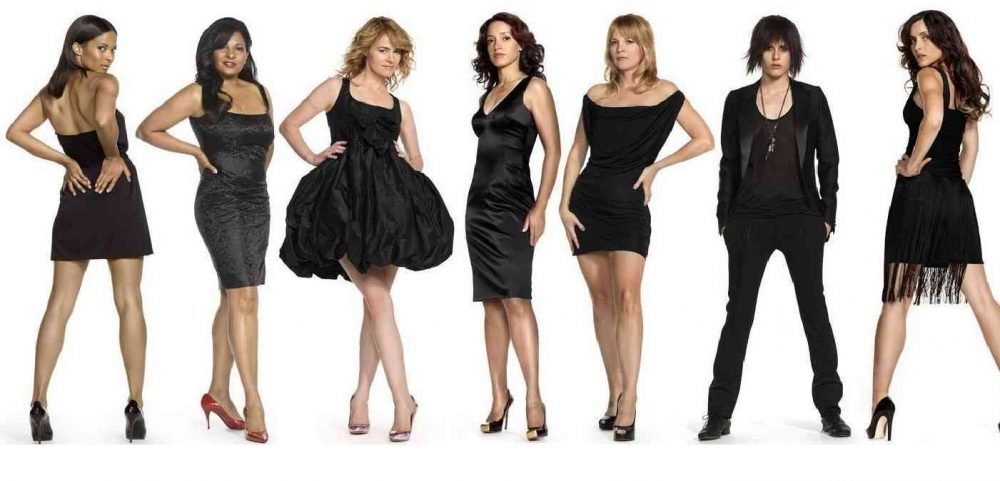LGBT social media networks were recently buzzing with news that a reboot of The L Word, the lesbian drama that ran for six series between 2004-09, is in the works at Showtime.
A tweet from one of the original stars, Jennifer Beals, posted on July 11 2017: “It’s on. Think more rebel yell than reboot”, generated much excitement – as did postings confirming the news from other cast members and the series original showrunner, Ilene Chalken.
Fans and cultural commentators have asked what the new series would be like. How would it better embrace diversity? How would it address key cultural shifts such as the parallel rise in gender fluid identities and increased trans visibility and the new religious right with their feet under the table at the White House?
The revival will feature series regulars Beals, Kate Moennig and Leisha Hailey who are reported to be taking roles as executive producers along with Chaiken, who was the creative force behind the series.
The L Word presented a series of representational firsts that other television series such as Orange is the New Black and Sense8 have built on. It followed shows such as Will & Grace, Queer Eye for the Straight Guy, and Queer as Folk, which paved the way for gay representation on our screens, but these all focused on gay male experiences.
The L Word was the first mainstream series to place lesbians centre stage – it was the first to feature a lesbian couple who conceive a child through insemination and it was the first to attempt a broadly sympathetic portrayal of transgender experience in a sustained way. The series drew large audiences, critical acclaim and academic attention in the form of two edited books. It also won a number of GLAAD Media Awards and nominations for outstanding drama series.
Positive role models
So, what was The L Word and why was it so important for lesbian communities? The show followed the lives, loves and daily dramas of a group of lesbians living in West Hollywood. The protagonists were stylish, sexy and successful women who worked and worked out.
The L Word clique were members of the “acceptable-privileged” – all were in one way or another working in the creative or entertainment and leisure industries. As such they offered new representational models for lesbians across the world who were starved of positive or attractive images. We eagerly devoured these untold stories that resonated with our lives or our fantasy lives.
The characters were flawed and human, but they were also gorgeous, warm and funny. This was a show, in the paraphrased words of the cast, about community, acceptance, women, the power of friendship and a chosen family. It was also about desire and love and audiences were treated to highly erotic scenes made by a female team of writers and producers never before seen outside of male-orientated porn. Criticisms of the show for pandering to male desire to see “girl-on-girl action” missed the points that the sex scenes were framed from a female point-of-view, and that lesbians have a right to our own visual erotica through the medium of quality drama.
No tokenism
The characters did include men and straight women, but they were peripheral, reversing the tradition of the token lesbians who had previously appeared in mainstream television shows such as Friends. Like Orange is the New Black – although in a very different setting – the series begins with a heterosexual hook, the arrival of Jenny (Mia Kirshner) to live with her boyfriend Tim (Eric Mabius). But Jenny is soon integrated into the lesbian crowd and at the centre of many romantic trysts – and her sympathetic, attractive boyfriend is dispensed with after the first series. The world of L Word disavows the old flawed cliche that lesbians are anti-men – they are just not that interested in them.
The characters are all wealthy or at least access privileged lifestyles. They – and, vicariously, we – enjoy the spoils and spaces of their wealth: desirable homes, trendy cafes, quality restaurants, art galleries, designer clothes and cars, and time for affairs and intrigues. In short, the world of The L Word is one of privilege and it has been criticised for ignoring economic realities faced by off-screen lesbians and for the representation of some of its black characters.
Yet, while some of these criticisms are valid, The L Word provided many pleasures to lesbians, it did create – to my mind at least – sympathetic black and Latina characters and contributed to increased media diversity that others have built on, to a degree. British television followed in its wake with Lip Service, a series heavily influenced by The L Word, and cutting edge LGBT drama Cucumber, Banana and Tofu. Yet, the lack of any US lesbian-centred drama with the partial exception of Orange is the New Black is, Chaiken has argued, the reason behind the decision to bring the show back.
The queer celebration of privilege and desire was one of the reasons behind the success of the show for a community that was either invisible or marginalised. The series presented a fantasy that lesbians enjoyed because these lives were so different to the troubled stereotypical lesbian caricatures wheeled out on programmes such as the Jerry Springer show.
The L Word made it cool to be a lesbian for the first time – and the effect on the generations who watched it cannot be underestimated. LGBT audiences will watch with interest how the reboot will respond to cultural shifts in our communities.
Deborah Shaw, Reader in Film Studies, University of Portsmouth
This article is republished from The Conversation under a Creative Commons license. Read the original article.
